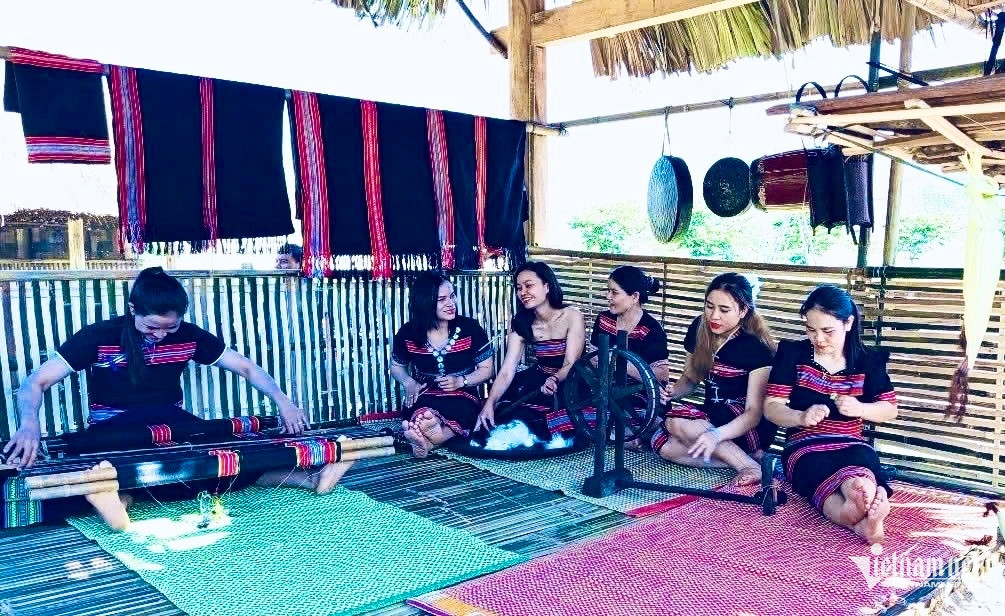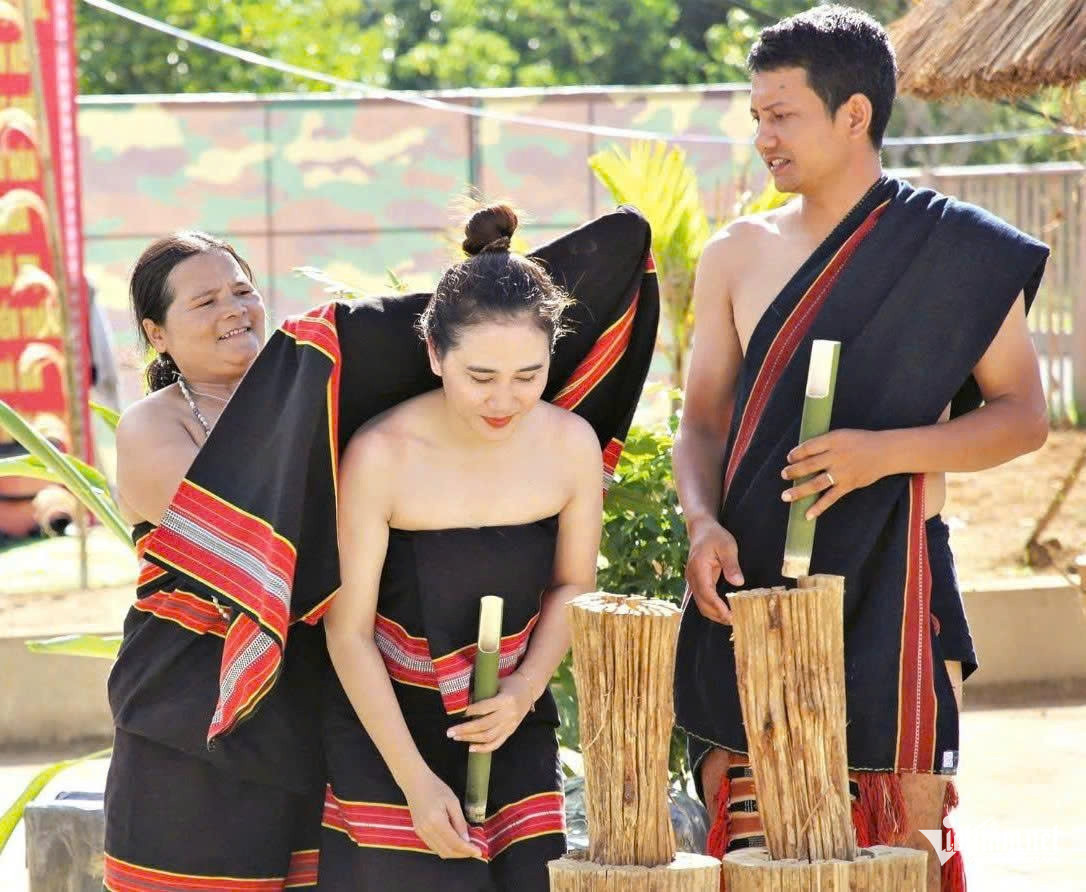In Ve courtship, love is expressed through traditional art: boys play the khen (a wind instrument), and girls respond with melodic singing. Their songs are poetic, sometimes wistful: “Tears flow from my eyes, my love / You’ve crossed the Tuk stream / Tears flow from my eyes, my love / You’ve crossed the Pring river…”
When love is mutual, the groom's family sends matchmakers to formally propose, followed by the Ka de trang ceremony, where the families begin discussing wedding plans. For several months to a year before the actual wedding, the engaged couple takes turns dining at each other’s homes, strengthening bonds between families.
During the final wedding ceremony, called Be chia, the most important ritual object is the do doi, gifted by the bride's family. This brocade is dyed using natural ingredients - leaves, roots, kitchen ash - and decorated with motifs in red, white, indigo, and yellow that depict ancestral myths, forest deities, and flowing rivers. According to Pơ Loong Thi Liem, a 64-year-old woman in the village, each woven line tells a sacred story.
Elder Pơ Loong Ty, 78, emphasized that without a do doi, a Ve wedding is incomplete. While the groom’s family presents a handwoven basket showcasing his craftsmanship, the bride offers her brocade - demonstrating her love and loyalty. The groom’s mother then ceremoniously places the blanket over the bride’s shoulders as a blessing for a long, harmonious life together.
The number of do doi blankets a bride makes depends on her ability and dedication, but even one carries deep symbolic weight. The two fabric panels embody two separate lives, now intertwined in marriage, with shared hopes for a family and community blessings.
Today, even as modern life reaches deeper into Vietnam’s highlands, many Ve families continue this tradition, preserving its beauty and meaning. The do doi is no longer just a wedding dowry - it is a cultural heirloom, a symbol of enduring love, heritage, and the artistry of Ve women.
As cultural exchange expands in Da Nang’s mountainous regions, the do doi remains a living testament to the Ve people’s identity. Each thread and motif continues to tell the love stories and ancestral wisdom of their homeland, echoing like a ballad through the Trường Sơn forests.
Hong Phuc



